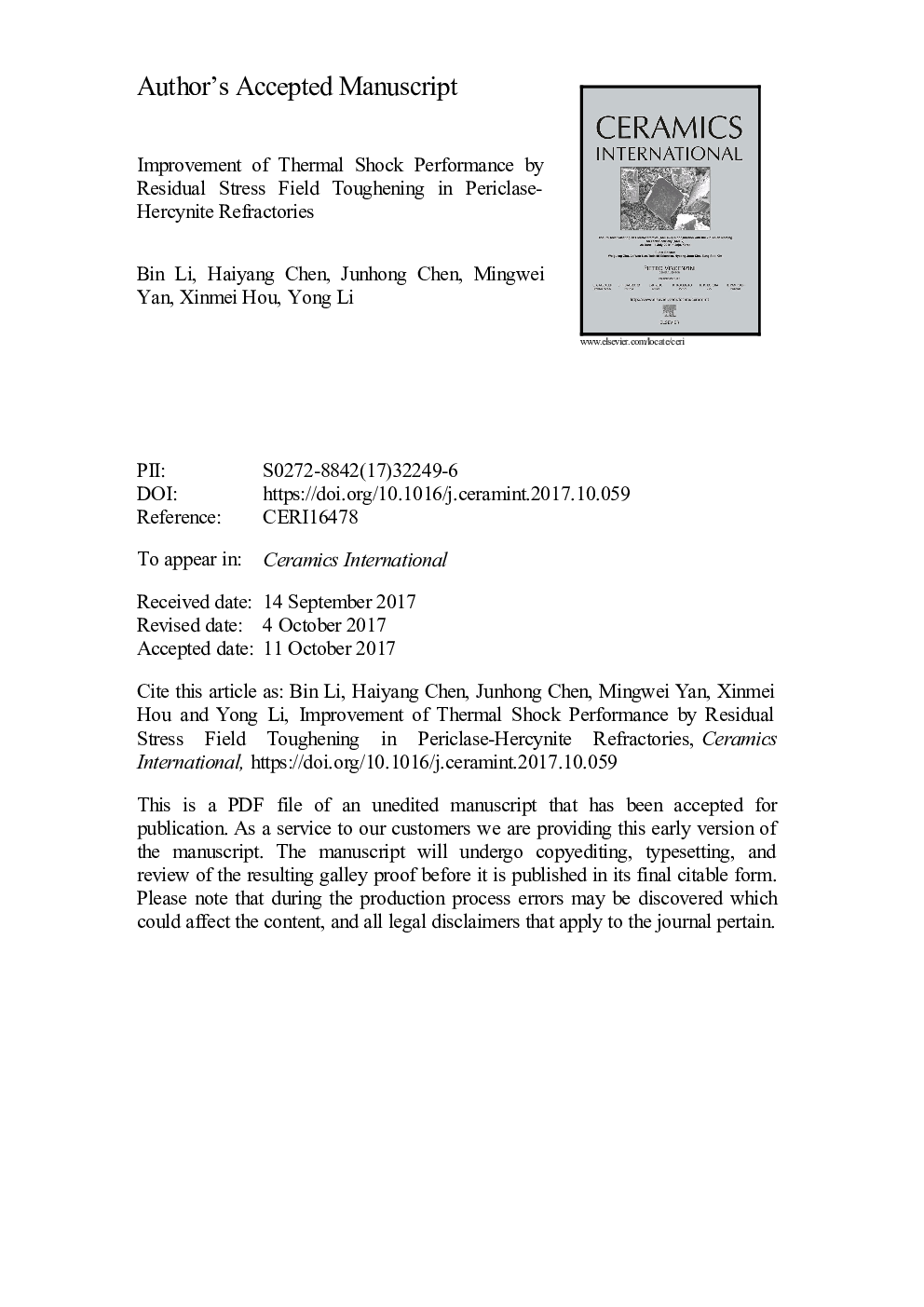| Article ID | Journal | Published Year | Pages | File Type |
|---|---|---|---|---|
| 7888668 | Ceramics International | 2018 | 20 Pages |
Abstract
In this paper, the periclase-hercynite bricks suffered ten cycles of thermal shocks were characterized, and the micro-mechanism of enhancement thermal shock performance for periclase-hercynite refractories was analyzed by using residual stress field theory. Due to the diffusion of Fe2+ (or Fe3+) and Al3+, the composite spinel particles formed inside of magnesia grains in contract with hercynite. When temperature fluctuates, the caused residual stress field and composite spinel particles prevent the extension and propagation of microcracks, enhance fracture toughness, improving of thermal shock stability of magnesia grains. The estimated value of residual stress field and increment of fracture toughness for magnesia grains with composite spinel particles inside by residual stress field toughening model are â1339.19 MPa and 0.49 MPa m1/2, respectively. The excellent thermal shock resistance of periclase-hercynite refractories is derived from the improvement of the internal microstructure of large quantities of magnesia grains around the hercynite.
Keywords
Related Topics
Physical Sciences and Engineering
Materials Science
Ceramics and Composites
Authors
Bin Li, Haiyang Chen, Junhong Chen, Mingwei Yan, Xinmei Hou, Yong Li,
